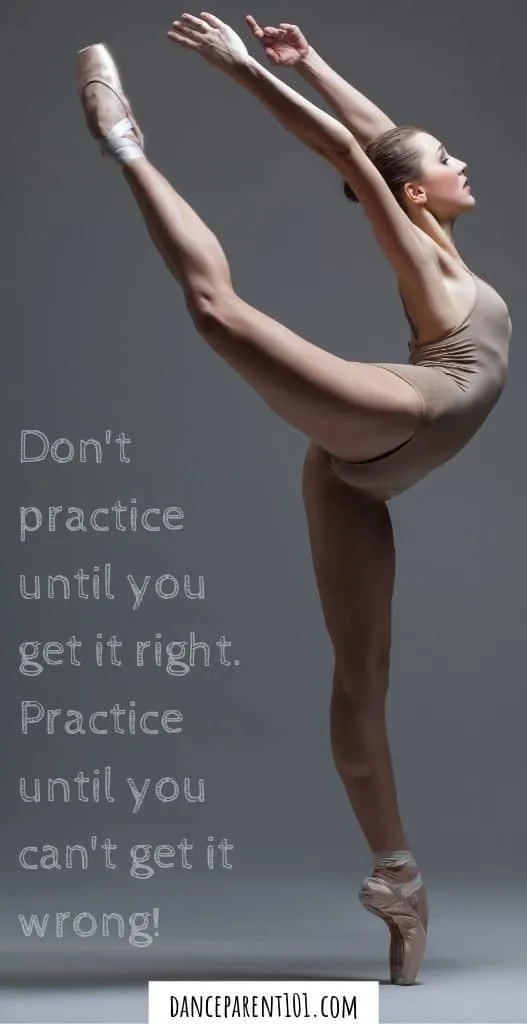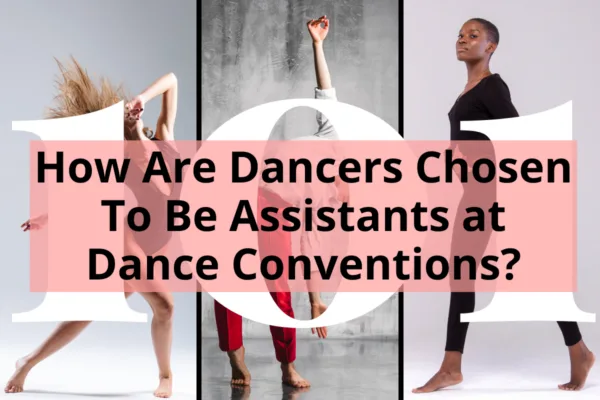
My daughter was recently asked to join her studio junior competition team. Although I have competed at the top level and won whilst performing with a jazz and contemporary team, from my recent experiences as a dance mom at recital photo day (turning up with ballet shoes and tights, nail polish on toes for a costume requiring jazz transition tights and bare feet – oh dear!!) I have realized that because I think I know it all, I can just wing it all!
But I am sorry to say, this is seriously not the case and so from my previous experience competing in solos, duos, trios, and troupes both at a local suburban to national levels, I decided I needed to sit down and put together a list of tips and tricks to help me and also you prepare for a first dance competition.
Getting prepared for a first dance competition can be really stressful for you and your child, but the more prepared and organized you are, the more you can enjoy yourself and have a great time and bonding experience with both your kid, the dance team and other parents!
- Make a checklist.
- Make a plan and follow it.
- Organize costuming and shoes.
- Will your child need a studio tracksuit or uniform?
- Hair and Makeup
- Check out the venue online.
- Practice, practice and practice some more.
- Perform in front of an audience.
- Get some professional feedback.
- Communicate with your teacher.
- Get enough sleep.
- Eat right.
- Arrive on time.
- Warm-up
- Everything is Figouroutable.
- Bring a backup.
- Let yourself take a bow!
TWO QUICK PERSONAL STORIES ABOUT WHY BEING PREPARED AND ORGANIZED HELPS!
For my first ever solo competition I was a bundle of nerves! I was doing a jazz solo my favorite and best style and I sat side of stage literally shaking before I went on. I felt cold and hot at the same time, was sweating and was staining the underarms of the costume before I had even gone on stage. I was a total wreck. The competition was out of town and no one else from my school was competing as it was the novice section, so my teacher wasn’t there – just my mum and me, but she wasn’t allowed backstage. In the dressing rooms, she had started chatting with one of the dance teachers at another school who had a student in the same section. My mom told her how it was my first time and how I was nervous and so she took me under her wing, sat with me side of the stage and coaxed me through getting over my first-time nerves and got me out onto that stage. I came off elated and she was full of praise for my efforts. I felt on top of the world – and I came second, which I thought was pretty special! I don’t know what I would have done without that teacher and what would have happened if my mum hadn’t started talking to her for advice and help. Thank-you mom!
The thing is, I became overwhelmed. I had the dance down pact even though I had only a few lessons, but I didn’t practice it at home or even run through it in my head with the music. The other thing was that my costume wasn’t properly finished. This was back in the day when bulk cheap costume suppliers where just a figment of many dance parent’s imaginations as they sat at their sewing machines into the early hours of the morning trying to tame lycra and tulle! No one was to blame, both my mom and teacher had full-time jobs on top of the dance thing and it had just been left to the last minute.
The second story is about being too ready! When I was a performing arts student we competed at the highest level, against the top schools in the country. It was the day of the jazz dance team finals and our teachers had left me in charge at the hotel as they went to watch the contemporary section, which they were thinking of entering the following year. The thing is they hadn’t left me with any instructions as to when we were leaving as a team for the comp and when everyone should be ready by as we always did our makeup and hair before we left due to space availability at the venue – The Sydney Opera House. To make matters worse – their phones were turned off by the time these first questions started flooding in by my teammates. Eventually, I caved in and said – ok just start doing your hair and makeup so we are ready when they get back. But we ended up having plenty of time. The thing is – putting on your stage makeup, the foundation, and lashes and doing your hair before a performance is a kind of ritual that produces a buzz and energy within everyone. But slowly as time passed as we waited to leave this excitement just seemed to die down. Now at the end of the day – we still won – we were lucky because we were so well-rehearsed we could have smashed out the routine in our sleep! But the performance that night just lacked that energy that we all knew would have knocked the audience out of their seats and left us with an experience of a performance we would have never have forgotten.
Thankfully, from these and other experiences, I have put together some tools and tips which can help instruct you on what steps to take to be prepared and organized and to help you relieve anxiety and get geared up for a successful first competition.
1. Make a Checklist
Sit down and make a thorough checklist of all the things you need to get done before the competition. Some of the things you might need to put on your list include the following:
- Clean shoes
- Buy costume and embellish with sequins
- Schedule time for teacher-guided and home practice
- Map out a route to the dance venue
- Do a test run to the venue to learn how much time you need to get there
To make this easier we have a printable PDF checklist available to all email subscribers to get you started. You can click here to subscribe – it will open in a new tab so you won’t lose this page.
2. Make a Plan and Follow It.
Use your checklist to make a plan so that you prepare, pack and are ready for comp day. Set dates for when things need to be finalized, started or completed and tick them off when they are.
I am going to be truthful here. I love making plans, but I hate following through with them. Just looking at everything that needs to be done can make me anxious, especially if I set a date to start or complete something and that day goes past without it being done.
That being said, the times I have stuck with a plan I have been the most successful and efficient, but even those times when I have made the plan and am unable to follow it – I at least have an idea of what needs to be done even if it is rushed at the end. Planning has always meant I was more organized than if I hadn’t planned at all.
I made a free checklist pdf available to email subscribers and you can easily write a date next to the items if needed.
3. Organize Costuming and Shoes

SOLO, DUO or TRIO
If you are reading this because your child is doing their first solo, or even a duo or trio make sure you organize costuming as soon as your teacher has come up with the music and concept for the dance. If you need to order the costume make sure the shipping time is well before the competition date. Some other options are renting one from your teacher/studio, buying one off of another dance parent and student or making your own. Whichever you choose, make sure you have fittings well before the competition date and give your child a chance to rehearse in costume with their teacher. It is amazing how some feathers on one shoulder or a skirt can affect your child’s performance.
DANCE TEAM
If you are reading this and your child is part of a dance team or studio company, your teacher will generally organize the costuming for you. But you need to be aware that there will be a cost for this on top of your usual recital costume fee. Some studios might ask you to embellish the costume by sewing sequins or gluing rhinestones or by making a headpiece to ensure no one else will have the same costume as your studio and so your team stands out. If this is the case make sure you attend any meetings or watch any video tutorials the studio makes to explain what to do and start the process as early as possible.
DO NOT LEAVE THIS UNTIL THE LAST MINUTE! I repeat… DO NOT LEAVE FINISHING A COSTUME UNTIL THE LAST MINUTE.
This will cause unneeded stress which will carry onto the day especially if you are still sewing on sequins minutes before you need to leave, or like I once did, was sticking embellishments onto a costume on the way to the recital. (Just to be clear it was my teacher who had left costuming to the last minute in this case!)
SHOES and TIGHTS
Once the costume is set make sure you know what color shoes will be used if any. You might need to paint, clean or buy new ones and knowing this in advance can be extremely helpful. Once you know shoe type and color make sure you are also aware of what tights are too be worn so you can purchase them in advance as well. At my dance studio, we wore two pairs of regular gussetless pantyhose in a certain shade under a pair of jazz tan fishnet stockings – every studio is different so make sure you know what you need.
PACKING
What will you be packing the costume and all your child’s accessories in? Do you need to buy costume bags? Or have you been thinking of buying a bag specially made to store and carry everything? I like to use clear costume bags like the ones on our resource page to store costumes and I am looking at buying a costume trolley bag to store everything in, but have seen some reviews of certain brands that say the garment rack isn’t sturdy or falls over and so I am hoping to get the one on our resource page soon!
PRO TIP
Create an itemized list of everything you need for a costume. Ideally, you should make this on a computer so you can reprint it. Each time you need that costume you can use the list to check everything off and make sure everything is there. If you are taking more than one costume try to pack everything you need for each costume into their own garment bags so that each costume has it’s place and space!
4. Will Your Child Need A Uniform?
Most dance studios have a specific uniform that their students are required to wear to represent their school at competitions and other events. Some parents (like myself) do not order this part of the dance school uniform until they have to, which is usually some sort of track pant and matching sports jacket, not just because of the cost, but because their child tends to flit from one activity to another and so they purchase this item only when it is needed. Just this morning my daughter said she doesn’t want to dance next year… then when I spoke with her this afternoon she was like, well maybe I will just do hip hop?
Two good reasons to start looking to get one as soon as you know your child is doing competitions is that you might get lucky and find one second hand from another family. The other reason is that your teacher will generally get the uniforms made as special orders and if they don’t have any in stock in your child’s size, it might take some time to get a new one in.
Also, you need to think about what your child will wear under the uniform. Generally, but not always many competitions are towards the cooler months of the year and so you will want to keep your dancer warm, but remember that clothing needs to be able to get over your child’s made-up face and hair, this is why many dance teachers tell their students to wear their leotard and tights underneath, so take all this into consideration when dressing.
5. Hair and Makeup

Most parents whose child is in competitions will have done their child’s hair and makeup for their school recital in the past. For most schools, competition hair and makeup is exactly the same as for their recital or concert.
For others whose studios require no or little makeup, stage makeup for competitions will be quite new.
But whether you’re a pro or a newbie, you might need to do a pre-makeup and or hair run if something different is needed for this performance. Many dance teachers like to do something a little more special or dazzling with makeup or hair for competitions to help their school stand out from the rest. If this is the case, your teacher will provide you with the instruction you need, but you as the parent will need to follow through and practice the instruction. So set aside time with your child to practice as necessary, trust me on this one.
Secondly, do you have all the products you need such as eyeshadow, lipstick, false eyelashes, hairpins, hair spray and more… you might just have to stock up on some of these items if you are running low or out. Make sure you add these items to your check and packing lists.
6. Check Out the Venue or Location online.
It is important to find out where the dance competition venue is located way before the date of the big day. Competitions are usually held at convention centers, school theatres, and similar venues and some things you should look for online are:
- the correct entrance to the building.
- the best place for parking
- best route to the venue (save in your phone, GPS or print out)
- find out about any roadworks or road closures in advance
- what time you need to leave to get there on time
Ask other parents at your school who have been doing competitions for a while for their advice, as they might have been to this venue and competition before. Someone might offer to carpool or to meet you so you can follow them. Even so, it is always good to check these details yourself in case something falls through or you lose the car ahead of you.
For some studios performing in competitions means a lot of travel, therefore, you need to also look at:
- Will you need to book accommodation as it is far from home?
- The route from the hotel to the venue.
- Find out about any roadworks or road closures in advance.
7. Practice, Practice, and Practice Some More

As the old saying goes, practice makes perfect, but there is also a saying – practice until you can’t get it wrong. And from an experienced dancer, I can tell you that the more your child safely rehearses their routine the more it will be ingrained in their muscle memory which will take over when they get on stage. Regular rehearsal will also help your child be able to get through the routine without being overly tired and puffed out by the end – it increases their strength and stamina.
Rehearsal of entries and exits as well as practicing smiling or any other facial expression needed in the dance is just as important as rehearsing the routine, so make sure your child is getting plenty of tuition regarding these aspects of their performance as well. I lost points once as I got caught up in a curtain side of the stage as my exit consisted of a split leap in seconde, which is a sideways jump, so I wasn’t looking in the direction I was traveling. I hadn’t rehearsed on a stage before and didn’t realize that I would need to spot and look out for this several steps before my exit so I wouldn’t leap straight into the curtain, the lesson was learned though as I never did it again.
SOLO, DUO, TRIO PRACTICE
Solo lessons (as well as ones for duos and trios) can be expensive, and you will need a good amount of them for your child to be ready, so you need to consider these costs before agreeing to let your child do one. Find out from your teacher how many lessons they recommend your child take and set the time for the lessons. Some studios might take students for weekly lessons year-round, others might only have solo lessons for a set amount of weeks during the competition season.
DANCE TEAM OR STUDIO COMPANY
If your child is on a dance team or in the studio company make sure you have read any contracts regarding the costs involved and lessons and rehearsals your child has to attend. Some studios have a policy where your child needs to attend a set amount of lessons to be allowed to perform in the school’s competition teams. We have an article all about Dance Parent Contracts if you need to sign one, or have signed one and aren’t too sure about it.
HOME PRACTICE
Ensure you give your child the time and space to practice at home. Whether they are performing in a team or a solo, your teacher will generally film the routine and load it onto whatever communication platform they use with their parents and dancers so it can be practiced at home. I generally airplay this from my phone to the tv so my girls can practice with a big screen in the lounge room.
8. Perform in Front of an Audience.

If this is your child’s first competition especially if it is a solo dance, try to arrange some sort of performance of their routine before the competition. Some dance schools arrange an evening for solos, duos and trios to be performed in front of family and friends at the studio, or get students to perform at midterm, year or fall recitals for the experience.
If none of these events are available before the competition, round up family and friends for a performance in a space large enough for your child to perform and an audience to sit. Make a big enough deal out of it so your child experiences some nerves but not so much so they know if they screw up, they can always start again or do an encore. Being in costume and makeup will add to the event and give your child the chance to experience those aspects as well.
I have seen many a young child get up on stage and although they are doing the steps, their face is frozen in a smile through gritted teeth. In rehearsal, this never showed up, but upon that stage in front of an audience, you can see the concentration all over their face. A little more practice and experience in front of an audience usually helps dancers become more comfortable over time, allowing them to relax and enjoy being on stage.
9. Get some professional feedback.
Once your child has performed in front of others, it is important to get both positive and constructive feedback from your teacher. If you do a home performance film the event and ask your teacher for a critique. Then make sure you help your child follow through on improving their performance and to be proud of the parts that are working well already.
It is important to understand that getting feedback takes some getting used to, so if this is a first competition it is probably best not to ask Aunty Flo what she thought of the performance if you know she is going to tell your kid how their costume is too short, or she didn’t like the music or the way they moved their hips in one part of the dance. You don’t need your child second-guessing themselves on account of bad advice.
10. Communicate with Teachers
If you or your child are feeling overwhelmed or nervous talk about it with your teacher. Communication can be the key to a successful dance competition. Your teacher will have most likely gone through competitions when they were a dancer. This means they will understand both you and your child’s stress and anxiety.
Also through communication, your instructor will be able to answer any questions that you might have regarding the competition. If not maybe we have an article about it so try a search in our search bar at the top of the page!
11. Get Enough Sleep

There is nothing worse than feeling exhausted the morning before a competition. So it is really important not only the night before the competition but in the weeks before to try and get your child to stick to a bedtime routine. You should also try hard to get enough sleep the night before the competition yourself so you can be your best and be there for your child.
There are many dancers who get so excited or nervous about performing that they have trouble sleeping the night before a competition. If your child is one of these people try one of the following tips, it could just become a nice pre-competition ritual:
- take a warm bath
- give them a bedtime massage with calming oils like lavender
- Tell/read them a story or listen to audio stories or a podcast
- listen to a bedtime story especially made to help kids go to sleep like on the Calm App.
Try not to let them:
- get out of bed to rehearse their dance (a good children’s book that shows how detrimental this can be is Angelina Ballerina – Angelina and the Princess.)
- get out of bed to check their costume and shoes are packed
- watch screens of any type as this messes with their natural melatonin levels and may make them more alert and awake. (This being said if watching a show is the only thing that is going to get their mind off the next day then just make sure you choose a slow, boring, calming one, with night mode enabled and brightness dimmed down – do what you have to do!)
- have caffeinated drinks like cola, energy drinks or tea or coffee. Sometimes even large amounts of chocolate can keep them awake!
The goal is to do something that will relax their mind and body enough for them to get the sleep they need to perform the day of competition.
12. Eat Right
One of the most important things your child should be doing before their competition is eating right.
I always found before a competition I was too nervous to eat much, therefore whatever I ate needed to be packed with long-lasting energy to keep me going. Most dancers prefer not to eat anything heavy anyway because it makes them feel bloated or weighed down. So, you might want to consider preparing vegetables or protein-based, small-sized meals and snacks for your child on the day.
Some good snack or small meal options to eat before a dance competition include the following:
- Sliced carrots or celery
- Apples
- Cheese and Crackers
- Ham or chicken on cucumber rounds
- Dried fruit
- Air-popped popcorn (you don’t want oily hands on costumes)
- Brown rice or sweet potatoes with chicken breast or salmon and green veggies.
- Chicken or fish stirfry on brown or cauliflower rice.
- Tuna and salad.
You might find these snacks and meals help your child feel satisfied throughout their big day. If your child doesn’t usually get bloated on carbs then feel free to make a salad sandwich on whole-grain bread. Whole grains release their energy to the bloodstream slower allowing your child to feel fuller and have energy longer. I just wouldn’t advise eating more dense foods such as pasta which can make your child feel bloated and tired. Choose your food wisely. The above options might not seem as fun as say a bag of lollies or burger from a fast-food restaurant, but they can help you and your child feel emotionally better, boost energy, and help them get through their performance.
13. Arrive on time.
It is a good idea to plan to arrive a little early for your competition, as this will generally assure you arrive on time. Arriving on time will mean you will have time to speak with your teacher or competition organizers, you and your child aren’t rushed before their performance and your child will have ample time to warm-up.
If you do arrive early and the competition has started with other sections, it also can give you the chance to watch other competitors, which could help ease some of your child’s stress and make them more familiar with the process at that competition.
How Do I Know What Time To Arrive?
All competitions are not the same, but usually, they work on a schedule with morning, afternoon and evening sessions. Within each session, there are several sections for example #1 Jazz Solo 7 and Under, then #2 Jazz Solo 9 and Under then #3 Tap Solo 7 and Under.
If you are one of the first sections it is easy to know when your child should be performing because the session has a starting time. But as you go on through the session it can be harder to tell what time your child will be on. In our example, if your child is in the third section Tap Solo 7 and Under you can multiply by 3mins however many competitors are before your child for the entire session for a rough idea. The problem is that not all competitors show up and some sections have shorter or longer music requirements. The reason this is important is for instance if one section has 20 competitors in it, that will be at least an hour of waiting time for your child before it gets to your section, but if the two sections before them have 4 competitors each, you might only have 30 mins from the start of the session. Some competitions also have registration times, so you are given a time to be there that you have to register by or you forfeit your place. So make sure you talk to your teacher about this one to work out the best time to arrive and read the competition rule book.
14. Warm-Up

Warming up and staying warm before your child goes on stage is really important – and I should know, as I tore a hamstring on stage as I didn’t keep warm between routines when I was competing in multiple sections at a competition.
In the dressing rooms, everyone will be warming up and stretching and going over their routines with their headphones in their ears. A great tool for doing this is on a dot2dance which is a piece of portable dance flooring you can take with you anywhere. Your child will be able to safely rehearse turns and pointework or even a tap routine no matter what the flooring is in the dressing rooms at the venue. You can check out our review on our resource page here and see the different sizes they come in.
Warming up in the dressing room is great, but what usually happens from here is that all those competitors in a section will then go backstage and stand in the wings and wait for their turn to go on. This is the time that muscles start to cool down as there usually isn’t a lot of room to move about. Some tricks to keeping warm back or side of the stage when there is not a lot of space is wearing warm up booties over dance shoes until just before going on stage and foam rolling muscles to keep the blood flowing and the muscles warm.
15. Everything is Figuroutable
If you haven’t read her book yet, you should because Marie Forleo’s simple philosophy that there is a solution to everything (except natural law such as death, etc..) is applicable to everyone, not just the entrepreneurial set that generally follows her.
If your dancer is nervous or keeps telling you they are worried about something happening when they are on stage, sit down with your dancer and ask them what is worrying them. DO NOT PUT WORDS IN THEIR MOUTH – otherwise, you might bring up something they had never thought of before.
Discuss all the things THEY think might or can go wrong and discuss solutions to each of their scenarios. Don’t just dismiss something your kid says because of how unlikely it is to occur, take what they are saying seriously because their concerns are serious to them.
Some things they might think as disastrous could be:
- Forgetting the steps on stage and or freezing
- Making a mistake
- Hairpiece falling off or hair falling out
- Ballet shoe ribbon coming undone
- Tap falling off tap shoe
- Falling off the stage
- Tripping or slipping on stage
- Costume falling off
Some solutions:
Forgetting the steps on stage and or freezing
First, remind your child because they have been practicing so much that they have decreased their odds of this happening and that their body will probably take over and know what to do.
But in the case that it does happen tell them they could make up the steps until they got back on track with the music, the judges and audience have never seen the routine before so how will they know what you are doing is wrong? If you can’t pick it back up either make up the dance until the end or dance-off stage and the person on sound should lower the music and if not rush over to the stage manager and ask them to do that. If you keep smiling and act like it was supposed to happen, no one will think too much of it.
If your dancer is scared they will freeze, tell them they can start voguing or moving from pose to pose until they remember what they are supposed to be doing or slowly pose their way off the stage.
Do a practice run of both scenarios a few times so they are confident they have the tools and solution to their problem.
Making a mistake
Remind your child that no one in the audience will know they have made a mistake unless they make it obvious with their face. This is why it is important to practice smiling during rehearsals even when it feels funny or odd to do so, so that when they are on stage it is natural and easy to do so.
Practice and go over some scenarios in the routine where your child feels they might make a mistake and help them work through movements they could do to help them keep going.
They might, however, be worried that their teacher will see them make the mistake. And while this is true, if you have chosen a great teacher, they will understand that we all learn from our mistakes, but criticizing a young dancer under their guidance straight after or in public will not help boost their confidence for next time. A good teacher will address the mistake in the next lesson in a constructive way. If this is a big problem go back to step 9 and communicate with your teacher, allow your teacher to help dispell this fear with their student.
Hairpiece falling off, or hair falling out
Discuss with your child how you will endeavor to pin and spray their hair so that this doesn’t occur. And explain to them that if it does happen, that they need to keep on dancing.
If something falls off their head, they don’t need to pick the accessory off the floor, kick it off stage or do anything with it. In most cases, it is best to just leave it there, or they will spend their dance trying to figure out how best to do it rather than performing.
If the hat or hairpiece is hanging, this can distract both the dancer and the audience so they might try to rip it off and send it sailing into the wings in a way that complimented their dance.
If they were really concerned about their hair, you could practice doing their hair and pinning it before the day to find the best way to ensure it stays in and that you have the best accessories for the jobs such as hairpins and clips.
Ballet shoe ribbon coming undone
Many a ballerina is worried about this one. The best way to ensure ribbons don’t fall off is to make sure they are not too short so that you can double knot them. Some people also like to wrap the ribbon with clear invisible sticky tape for added security. It is important to also make sure the ribbons are sewn in securely. Practice tying the ribbons with your child securely like this and let them dance around the house to gain confidence. Another thing you could do if they were really worried is to add or keep the elastics on their shoe or ask your teacher if at their level having no ribbons and only elastic is acceptable. Elastics will ensure that even if the ribbon were to come undone or break the shoe would still stay on.
Tap falling off tap shoe
The metal taps on tap shoes are screwed into the sole of the shoe. If the taps were incorrectly screwed into the shoe, or sometimes with a lot of wear and tear the screw holes can become too wide causing the screw to fall out and tap to begin to fall off. For the entire tap to fall off, this would have to happen to all four screws usually used to attach a tap simultaneously which would be pretty unusual to happen. If a screw has never come loose in rehearsals or classes then it shouldn’t happen out of the blue on stage. But you can teach your child to do some maintenance on their shoes. Use a screwdriver to make sure none of the screws are too loose. They shouldn’t be too tight either otherwise, the tap can’t make that nice resonating tapping sound when the foot hits the floor. If your child’s taps are extremely loose you need to get this fixed. For two reasons #1 if the screw is loose it can start digging into and scratching the floor surface and secondly because it is dangerous to dance with and could fall off or cause your child to trip.
But mom, what if I fall off the edge of the stage?
For this one, your child needs the confidence to know that because they are aware that this is a possibility, it means that they are more likely to not fall off. They know to stay far away from the edge. Give them other examples such as when you go to the edge of a pool do you fall in? When you walk to the edge of the curb, do you fall over? Ask them to think of times they stop themselves. It is important to get them to visualize themselves stopping before the edge rather than falling over, because what we focus on we manifest. For example, when we tell our kids to not run – they can’t help themselves they run. But if we said walking time – they hear the word walk and visualize that and so they are more likely to walk.
Tripping or slipping on stage
Tripping or slipping on stage is always a possibility even for professional dancers. But what the audience will focus on is how you get up and carry on rather than the actual fall. It happens in all superhero movies. The hero is struck down in some way and faces adversity, but they get up they carry on and they prevail and win.
Discuss with your child – what is the worst that could happen if you fell? People would laugh? You would feel embarrassed?
How would you feel if you got up and carried on? Proud, accomplished as though I could do anything!
Costume breaking or falling off
If you have seen the opening to Pitch Perfect 2 – The Commando Situation – or the infamous Janet Jackson/Justin Timberlake Superbowl costume mishap, you can understand why anyone might be a little worried about their costume breaking or falling off on stage.
I suggest the following:
- Wear nude dancer panties/undies, bra or a dancer bodysuit under costumes, especially under unitards (see pitch perfect 2 if you need convincing!) For some ideas you can check out our dancer underwear resource pages.
- Have plenty of practice in the costume prior to the performance so your child is comfortable with it.
- Check the seams, straps and any other parts of the costumes for snags, holes and loose stitches and fix these.
- Take a sewing kit, body tape and lots of safety pins with you.
Some studios and teachers request students do not wear underwear under costumes. We have two articles on the topic, with solutions and options for you to consider.
16. Bring a Backup!
When you leave for a competition it can sometimes feel as though you are taking everything including the kitchen sink. But the thing is you never know what small incident could happen on the day and being prepared will mean that it does not become a bigger drama then it has to be.
I entered a solo one year in a section where you were you were marked not just on your performance, but the choreography as well, because you had to have made it up and rehearsed it yourself. Forty-five seconds into the solo and the music stopped. This was back in the day of cassette tapes. The tape was unplayable, I had worn it out through my constant rehearsal. The thing is – I didn’t bring a backup!
Today problems can happen when you copy music. You might copy glitches or skips, files might be too large, the volume might be set incorrectly. So it is always important to listen through the whole song that you are giving to a stage manager or competition operator and have a backup!
Backups you should definitely take are:
- Your music if it is a solo, duo or trio in whatever format the competition requires.
- Tights
Spares or items you might think about taking are:
- Shoes – even if they are not the right color! You can use them to warm up in and if disaster strikes you will have a second pair.
- Shoe paint
- Hairpins, hair ties, and safety pins.
- Snacks and water (Even if the venue sells food, or there are shops nearby it might not be the healthiest, can be expensive and are often inconvenient to get to during a competition.)
- Anything else that comes to mind that might be hard to source or replace if need be.
17. Let Yourself Take a Bow
You both made it. Your routine is over. Now, let yourself take a bow. Don’t be shy. You and your kid practiced, worked hard, and prepared for a first dance competition. Now, it’s time to listen to the applause. So, let yourself take a bow. Enjoy your moment.
Whatever the result, you might like to take your child out for a special dinner or get tickets to a ballet or musical to celebrate all the effort and hard work you both put in to get here. Or maybe you would like to buy a gift, but are unsure of what to give? We have a few well-curated ideas in the following guides just for this occasion!
The main thing to remember is to enjoy competition day, stay positive, and give yourself and your kid a pat on the back when the day is over. With a little preparation, organization, and practice your first soiree into the competition world will no doubt be successful no matter the outcome! Good luck!
Share this article on Pinterest Now!

Check Out our Google Web Story!
Further Reading
You might also be interested in reading more about competitions and we have a huge selection of articles which you can find here:























